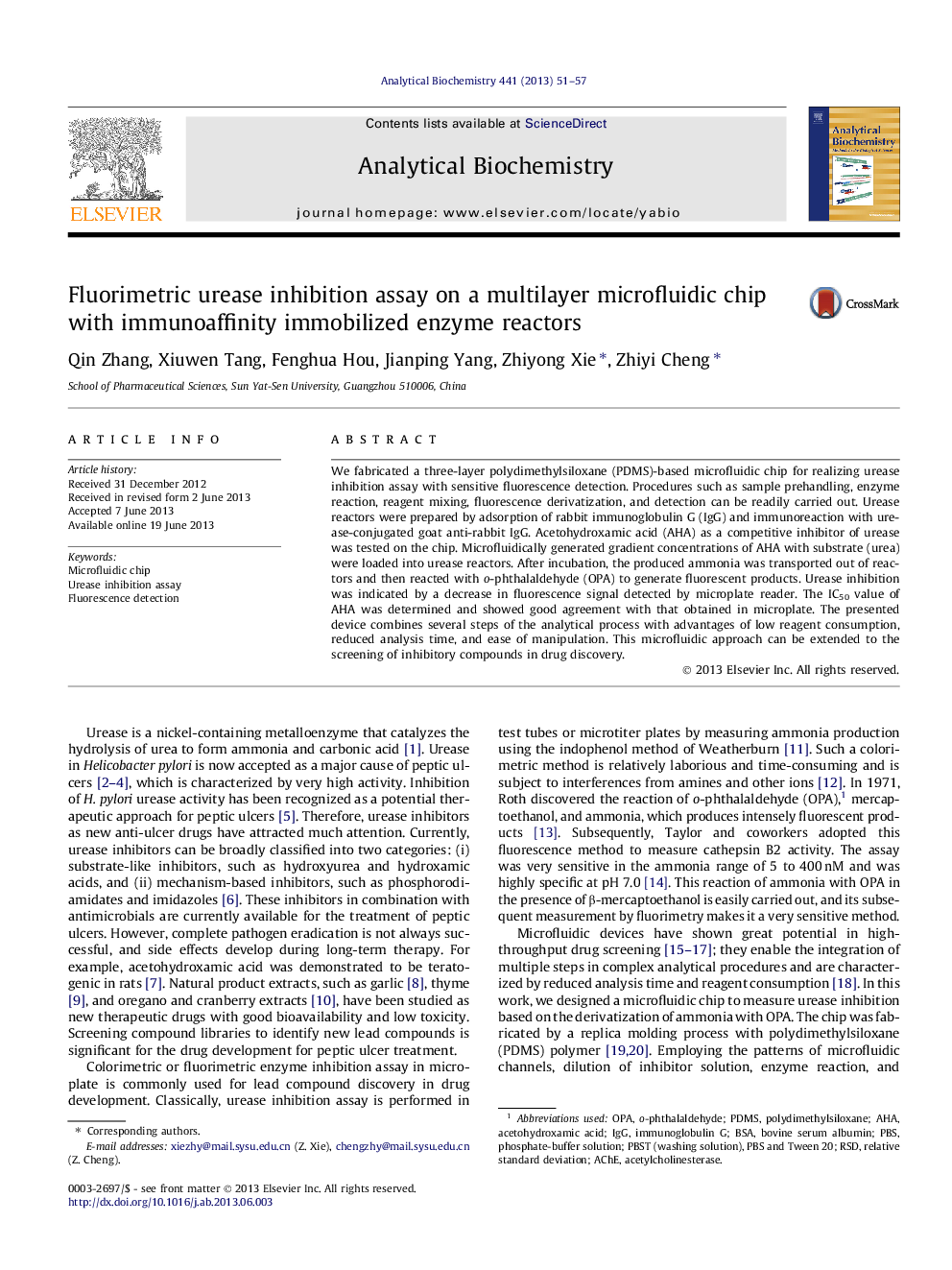| Article ID | Journal | Published Year | Pages | File Type |
|---|---|---|---|---|
| 10532653 | Analytical Biochemistry | 2013 | 7 Pages |
Abstract
We fabricated a three-layer polydimethylsiloxane (PDMS)-based microfluidic chip for realizing urease inhibition assay with sensitive fluorescence detection. Procedures such as sample prehandling, enzyme reaction, reagent mixing, fluorescence derivatization, and detection can be readily carried out. Urease reactors were prepared by adsorption of rabbit immunoglobulin G (IgG) and immunoreaction with urease-conjugated goat anti-rabbit IgG. Acetohydroxamic acid (AHA) as a competitive inhibitor of urease was tested on the chip. Microfluidically generated gradient concentrations of AHA with substrate (urea) were loaded into urease reactors. After incubation, the produced ammonia was transported out of reactors and then reacted with o-phthalaldehyde (OPA) to generate fluorescent products. Urease inhibition was indicated by a decrease in fluorescence signal detected by microplate reader. The IC50 value of AHA was determined and showed good agreement with that obtained in microplate. The presented device combines several steps of the analytical process with advantages of low reagent consumption, reduced analysis time, and ease of manipulation. This microfluidic approach can be extended to the screening of inhibitory compounds in drug discovery.
Related Topics
Physical Sciences and Engineering
Chemistry
Analytical Chemistry
Authors
Qin Zhang, Xiuwen Tang, Fenghua Hou, Jianping Yang, Zhiyong Xie, Zhiyi Cheng,
